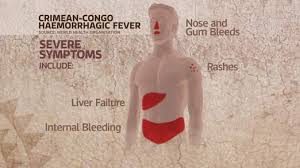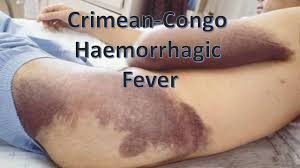
Crimean–Congo hemorrhagic fever (CCHF) is a widespread tick-borne viral disease that is endemic in Africa, the Balkans, the Middle East and Asia.
Crimean–Congo hemorrhagic fever occurs most frequently among agricultural workers following the bite of an infected tick, and to a lesser extent among slaughterhouse workers exposed to the blood and tissues of infected livestock, and medical personnel through contact with the body fluids of infected people.
How does Congo Virus Transmit to Humans
What Transmit Congo Virus
The Notrious Tick which is Responsible for Congo Virus Transmission.
SIGN AND SYMPTOMS
Typically, after a 1–3 day incubation period following a tick bite (5–6 days after exposure to infected blood or tissues), flu-like symptoms appear, which may resolve after one week. In up to 75% of cases, however, signs of hemorrhage appear within 3–5 days of the onset of illness in case of bad containment of the first symptoms: mood instability,agitation, mental confusion and throat petechiae; and soon after nosebleeds, vomiting, and black stools. The liver becomes swollen and painful. Disseminated intravascular coagulation may occur, as well as acute kidney failure, shock, and sometimes acute respiratory distress syndrome.
PREVENTION
Where mammalian tick infection is common, agricultural regulations require de-ticking farm animals before transportation or delivery for slaughter. Personal tick avoidance measures are recommended, such as use of insect repellents, adequate clothing and body inspection for adherent ticks.
TREATMENT
1.ISOLATION OF PATIENT
2.Treatment is primarily symptomatic and supportive, as there is no established specific treatment. Ribavirin is effective in vitro and has been used during outbreaks, but there is no trial evidence to support its use.
A Turkish research team led by Refik Saydam Health Institute has developed treatment-serum derived from blood of several CCHF-patients, which have been proven to be 90% effective in CCHF-patients












when do champix work.